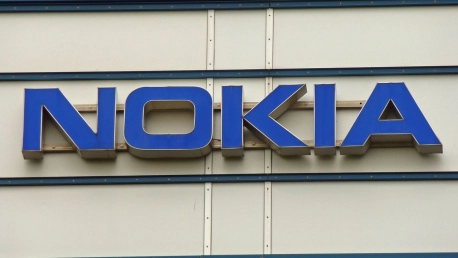Nokia and Ericsson, leading lights in the telecom sector, are embracing the 5G revolution by transitioning towards crafting their proprietary semiconductor technology. The arrival of 5G necessitates a new paradigm of network capability and efficiency that these Nordic telecom titans are eager to meet. Designing custom chips is a strategic maneuver, ensuring they remain competitive and effectively negotiate the intricate weave of 5G and AI. This bespoke approach to chip manufacturing denotes their dedication to staying ahead in the rapidly evolving telecom landscape, cementing their position as innovators and industry trailblazers. Through in-house chip development, they seek to redefine network infrastructure to meet modern demands, demonstrating foresight in a time of transformative change.
Ericsson’s Strategic Chip Development
Ericsson has long recognized the value of leading the charge in chip development, investing considerably over the past six years. This direction is a clear reflection of the company’s intention to uphold its status as a top contender in the 5G equipment market. In particular, Ericsson has nurtured its dedicated Ericsson Silicon division, aggressively pursuing breakthroughs in new chip generations. A testament to this commitment is the establishment of research and development facilities in locations like Austin, Texas, and Sweden. Ericsson’s methodology emphasizes incorporating state-of-the-art manufacturing technologies, thereby unleashing chips that deliver superior computational prowess while simultaneously minimizing energy consumption.Evolving to keep pace with the rapid technological advancements, Ericsson is not just creating chips but cultivating an ecosystem where advanced 5G functionality can thrive. Each annual release of new chipsets showcases a relentless pursuit of excellence, optimizing the intricate balance between speed and power efficiency. This technical agility is paramount as Ericsson faces stiff competition in an industry where product innovation is intimately tied to maintaining a leading market position.
Nokia’s Tailored Chip Design Approach
Nokia has embraced the need for bespoke chip design by launching its ReefShark SoCs in 2018, which has granted them the ability to tailor their tech performance to the exact demands of advanced wireless communication. This strategic move has led to notable enhancements, particularly in the realm of power efficiency and lighter design for their massive MIMO radios – key in boosting network capacity and efficiency.Jane Rygaard of Nokia highlights the importance of controlling the chip design process to customize product functionality in sync with the fast-paced evolution of wireless tech. With these bespoke chips being incorporated into Nokia’s range of products, the tangible benefits in terms of performance underscore the wisdom of Nokia’s internal development of chip technology.
The Importance of Custom Chips in 5G and AI
Custom chips have become a cornerstone for industry leaders like Ericsson and Nokia, who understand the increasing importance of specialized semiconductors. The computational intensity demanded by 5G and AI applications requires chips that are not merely powerful but also capable of high-speed, efficient data processing. The move towards in-house development allows these giants to retain control over their ability to innovate and more quickly adapt to shifting market demands. In recognizing that the future of telecom infrastructure is inherently linked to AI-driven services and the ever-growing data economy, both companies have strategically positioned themselves to cater to this new paradigm with their bespoke semiconductor solutions.The era of specialized chips within telecom networks is a clear indicator of the intricate demands of modern communication systems. As the volume and complexity of data traffic grow, the bespoke nature of these chips ensures that the infrastructure supporting this surge not only meets current requirements but is also ready for the challenges of the future. Both Ericsson’s and Nokia’s commitments to custom chip development speak volumes about their visions for a telecom landscape that continues to evolve rapidly.
Collaborations to Advance Chip Technology
Nokia and Marvell’s collaboration since 2020 on next-gen 5G chips harnesses Taiwan Semiconductor Manufacturing Co.’s 5nm tech. Their alliance underscores a trend: strategic collaborations are vital to advance telecom chip tech. These partnerships facilitate expertise exchange, speed up development, and churn out innovations vital for technology progression.As chip development becomes costlier and more complex, synergies like that of Nokia’s telecom knowledge and Marvell’s semiconductor expertise are key to crafting high-speed, low-latency data processing units needed for cutting-edge 5G. Such partnerships could set new industry standards.Industry giants like Ericsson and Nokia are also centering on in-house chip design, shaping the future of telecom. These customized chips are essential for progressive network infrastructures ready to handle increasing data and AI demands, marking a transformative era in telecom. The pursuit of chip innovation is now at the core of telecommunications’ evolution.









